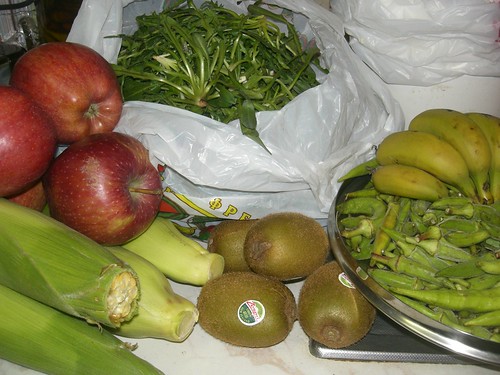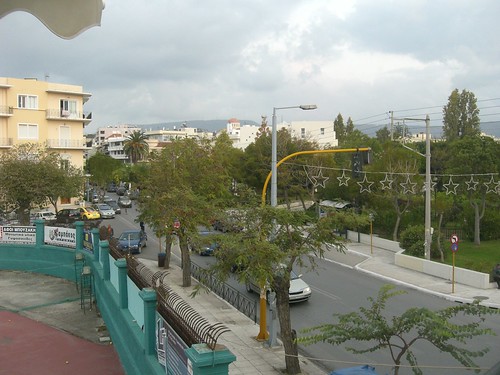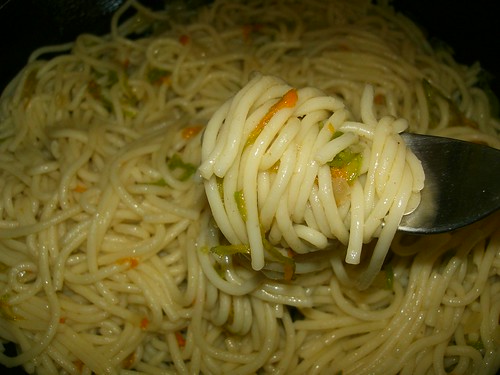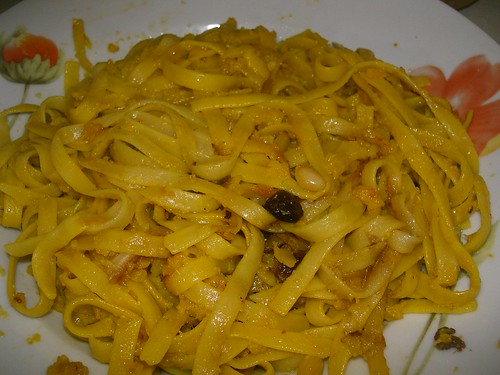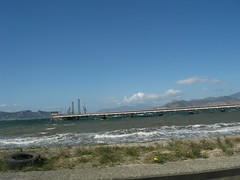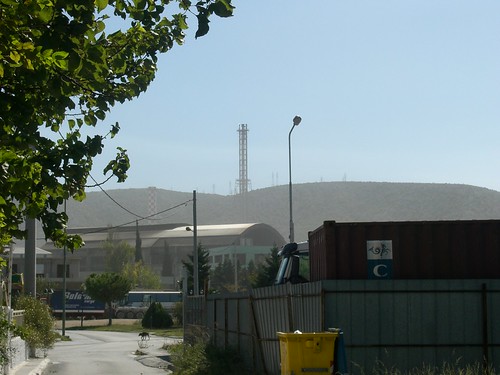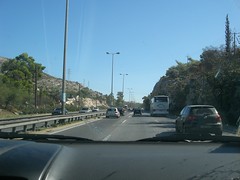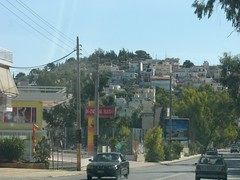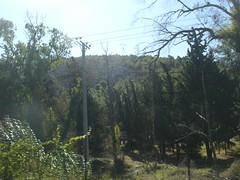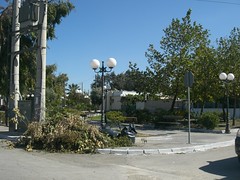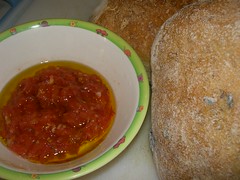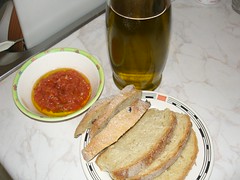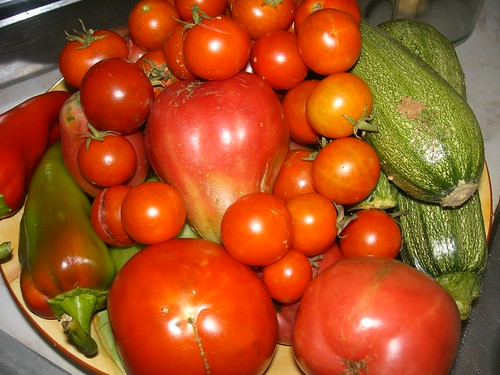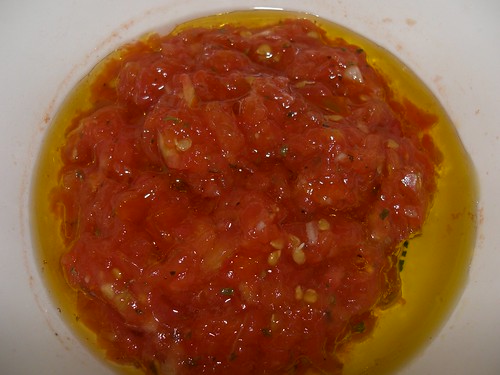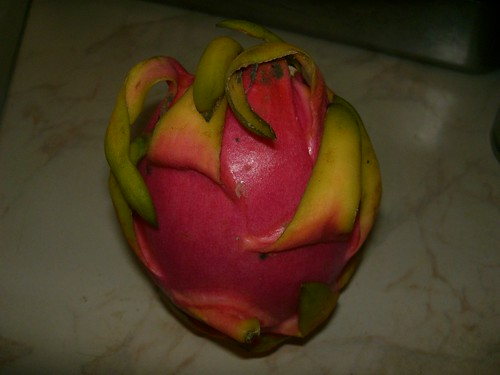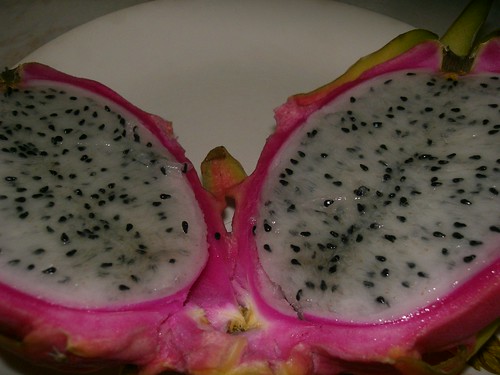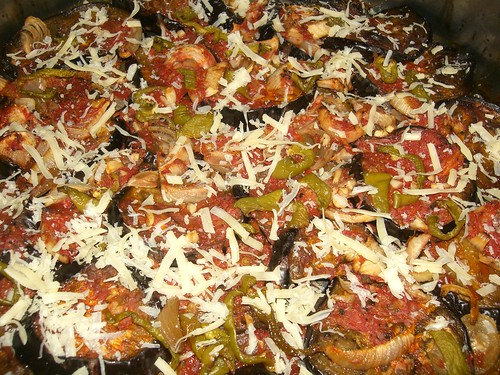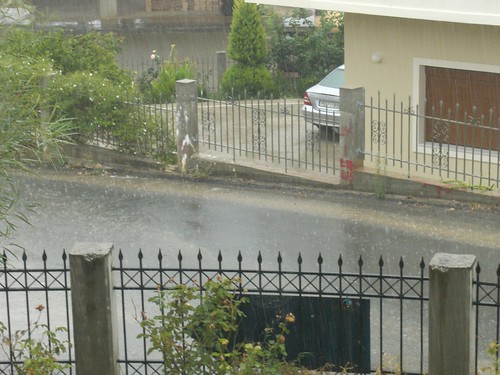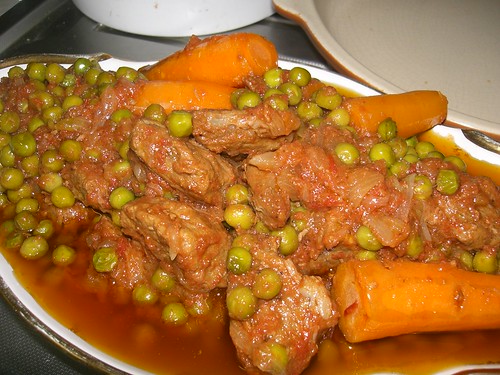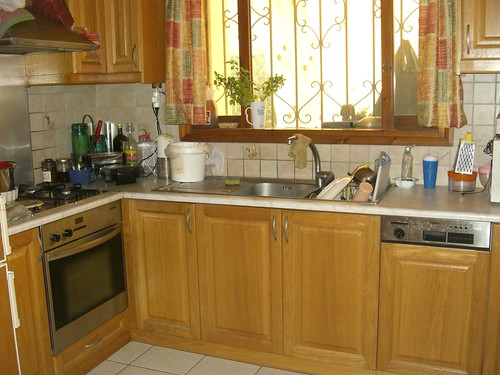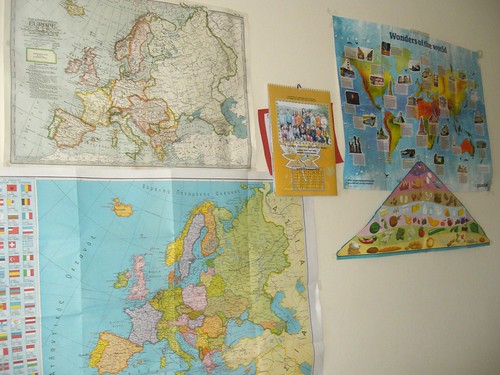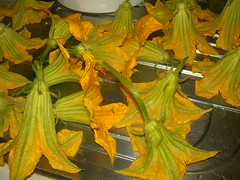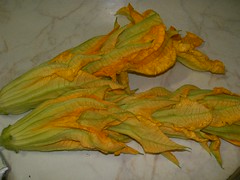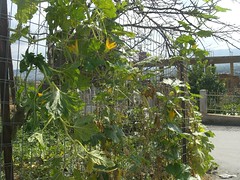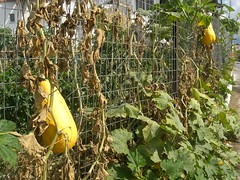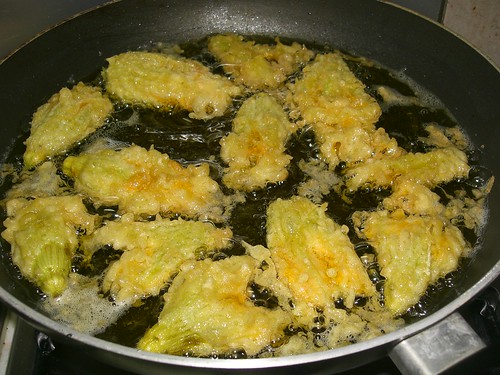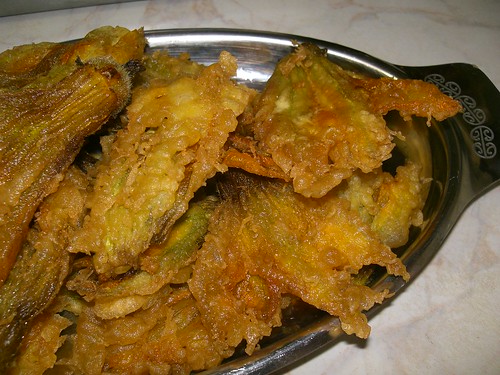In developed countries, people don't have to spend a lot of money on food. They can fill their stomachs with hi-fat, hi-carb, low-nutrient-value food at a fraction of the cost people in developing countries pay for their food. Those same poor people are also the fattest people in the country. In terms of food shopping, poor people will buy cheap food. It is a sorry state of affairs that the cheapest food is also the least nutritious, and this trend is unlikely to cease. What do people do food-wise to economise? Eat cheap takeaways, for one, and buy ready food from discount supermarkets. I'm not an economist, so please forgive me if I get my facts wrong in this, but I don't think I'm deluded when I say that I believe the average Cretan family won't be doing this. Somewhere, some place, something is growing freely, cultivated by someone who is harvesting in excess, and giving it away to somebody who will somehow prepare it into a tasty edible that will be shared out among family members who may not have the time to cook. Of course, takeaways are also available, but if you have a plate of nutritious food placed before you, you won't even think about fast food.
The summer garden is now in recession, so there's a lull period in our harvest. If we were subsistence farmers (without a salaried or freelance career), we'd be having trouble finding food now. So many food bloggers have praised the merits of nettles: apparently, they reduce allergies, cleanse your blood, relieve pain, stop hair loss and bleeding, lower your blood pressure, aid in digestion and kill germs; it's about time I tried them myself. The nettles in our garden are prospering in the autumn climate, so they'll be making their way into my greens pies from now on until the spinach starts to grow.
Poverty levels in Greece are said to be the highest (along with Portugal) in the EU-15. This also correlates with low average salaries in these countries. These statements must be viewed in context: Greece always had a lower average salary than for other European countries, and this became more prevalent once the euro was introduced. The meaning of poverty may be a universal one, but it does not ring the same tone when it is used in different countries. Greeks don't live in mud-huts, for instance, no matter how poor they are. And the economy of Greece has never operated in the same way as the economy of the more developed countries of Europe.
For a start, Greek banks never lend money cheaply. If you borrow money in Greece, be prepared to pay it back with a huge interest rate. Cheap housing loans are very carefully monitored by the state; there are a number of pre-conditions that must be met before a cheap loan will be meted out to anyone, and it involves a huge amount of paperwork. People often take out loans to buy their first home, which usually means an apartment, or to build their first home, usually on land that their family already had in their possession, or at least owned freehold. This effectively means that a family who builds a new house will expect to be living in that house for a long time.
The second point is related to this last fact: in Greece, you do not buy (or build) a property with a short-term view to owning it. You do not play the buy-and-sell game with ancestral land. You just keep it, until a good opportunity arises to use it. If you do end up selling it, you were either in desperate need of cash, or the property did not get used in the way it was intended (eg to be lived in by a descendant), and maintaining it was more costly than getting rid of it.
Take a friend of mine, whose husband inherited a piece of land from his parents in an inner-city neighbourhood. The area is considered working class, but the value of the land as real estate is quite high, given its proximity to the main town. It is not a visually appealing neighbourhood, but this has nothing whatsoever to do with the value of the property. They took out a loan seven years ago and built a house. Then they took out a second loan and built another house on top of that house, "for the kids," a common practice in Greece, saving land and property for your offspring. They've been living there for the last seven years and their children are in their late teens: how likely is it that they are thinking of selling this house? Extremely unlikely, I think. This story is typical of many of my friends, colleagues and acquaintances. We belong to the same category, regardless of the area where we live, the money we earn, the cars we drive. Some of us simply have more money at our disposal, according to the work we are involved in. But land and housing remain a stable part of a person's life: you buy land to keep it or build on it, and once you own a house, you live in it for a long time.
Property loans seemed to cause the greatest damage in the recent US crisis, which had a domino effect on all the other countries affected. As for the sharemarket, this isn't what the average Cretan does with his/her money. If there's a lot of extra cash in someone's possession, they'll be using it to buy more land, or build more properties that they'll rent out until the family needs them for accommodation. The properties won't be sold off; they will be built to be kept in the family. The only exception is 'rural land', which is sold at 'ballooned' prices to foreign property investors - I think they'll be in trouble now (after the Greeks got their money).
What if they don't want to build or buy land? Then the money stays in the bank. The bank has loads of cash available for loans, so the bank doesn't have a cash flow problem. There's loads of money in Greek banks. Who are the greatest savers, by the way? The Albanians, according to a recent news report. They make and save money in exactly the same way that Greek migrants did when they were leaving Greece and going to places like Australia, New Zealand and Canada, which is why most of them ended up with their own properties in those countries too (Albanians are also property owners in Greece). The government only last week raised the guaranteed pay-out sum of a bank account, should a bank go bust, from 20,000 to 100,000 euro. Surely the government isn't kidding when they say that the Greek banking system is stable.
A lot of less knowledgeable Greeks doubted the validity of the government's promises, thanks to the dependence of Greek TV news (both state and private channels) on reporting the economic crisis in the rest of the world. The best place to keep your money is under your mattress, said one English economist. Your house will lose its value, said another. This kind of reporting caused many people to panic without reason. Greece just doesn't follow the rest of the world; they're always doing their own thing. You don't come to Greece to earn money or gain work experience, do you? You come to Greece to see the islands, get a good tan, and indulge yourself in high-quality nightlife. If Greece suffers, it's going to be next summer when the package tourists can't come because they can't afford it because their country is in recession after the recent economic crisis. If anything, this is going to give Greece a chance to catch up to the rest of the world (or that the rest of the world will lower their standards and come back to our earthly levels), but I doubt that this will mean that Greeks will start thinking the same way money-wise as the rest of the world. We're still going to keep our land and houses.
We relied heavily on our summer garden these past few months, something the average lawn-mowing, flower-growing Westerner doesn't (or, weather-wise, can't) do, another reason to need to buy cheap food, since they can't grow it themselves. Now that autumn has set in and the sun isn't always shining every day, there is a lull period in our harvest, a good thing, because I can now see the back of the fridge, I have to supplement our vegetable needs with bought produce. The economic crisis didn't stop me from spending 17 euro just last Monday to buy all these delicious vegetables: locally grown (not necessarily organic) okra and stamnagathi (no more vlita - amaranth - greens in the garden; they've all gone to seed in preparation for next summer), apples from the mainland, the last of the summer sweetcorn harvest, kiwifruit from New Zealand and some very sweet baby Cretan bananas grown in Iraklio (150km away). We may not earn much (my present employment situation could constitute a whole blog's worth of posts), but our food is still nutritious.
And where did I find all these goodies? There are two greengrocers in the vicinity of my children's after-school activity groups. One sells mainly local produce, some of which is organic by default (eg wild greens picked from uncultivated hillside fields), while the other sells high quality fruit and vegetables imported from around the country. There is also an organic supplies shop (named after the goddess of the Earth, Gaia) located in between these two stores, and everything is within walking distance. If my children weren't involved in club activities, I wouldn't have bothered to shop from these stores, mainly because they are a little too far away from my house. I probably would have bought my extra needs from the local supermarket. Instead, I am now supporting small shops; my guess is most Greeks living in main centres still do this anyway.
But it's still easy to fall prey to those TV people, who've been forecasting doom and gloom for the past two weeks. On Saturday night, I asked my husband what he would like to have for lunch the next day.
"Let's go out," he suggested.
"Let's save our money," I replied; I had been sucked into the panic created by the media. I took out some goat meat from the deep freeze to make a tsigariasto meat stew and sliced some aubergines in preparation for eggplant pizza. It would have been so wasteful not to have used the garden produce after all, in these hard times.
©All Rights Reserved/Organically cooked. No part of this blog may be reproduced and/or copied by any means without prior consent from Maria Verivaki.

